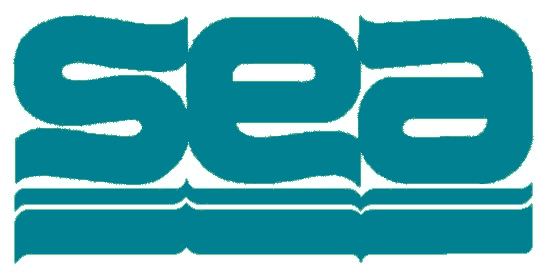In Business Since 1981
Past Projects at SEA Engineering Co Inc
Commercial Aircraft Reversible Cargo Conversion System
The IFC Reversible Cargo System is a cargo container system for commercial jets that enables the operator to convert the passenger deck of the aircraft to carry any combination of passenger and cargo from 100% cargo to 100% passenger. The system is completely reversible enabling the operator to easily respond to rapidly changing market and route demands.
This project leveraged SEA Engineering’s skill set in that it was characterized by the coordination of design engineering and technology professionals and organizations from around the world: The owner is located in Montreal, Canada. SEA Engineering’s Edward Smallhorn, the main designer, is located in Dartmouth, Nova Scotia, Canada. The project manager is located in Ottawa, Canada. The container manufacturing company headquarters is in the Netherlands and its fabrication division is located in Bangkok, Thailand. Aerospace-certified machining and component stress testing services were provided by a company in Charlottetown, Prince Edward Island, Canada and aerospace-specified fire, smoke, shock and vibration testing
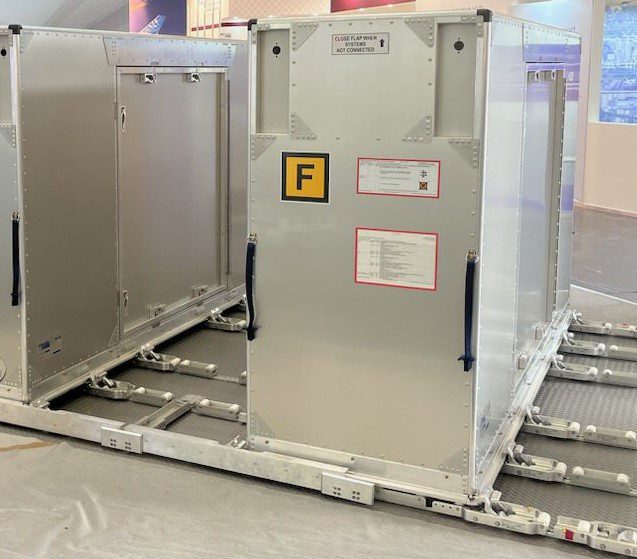
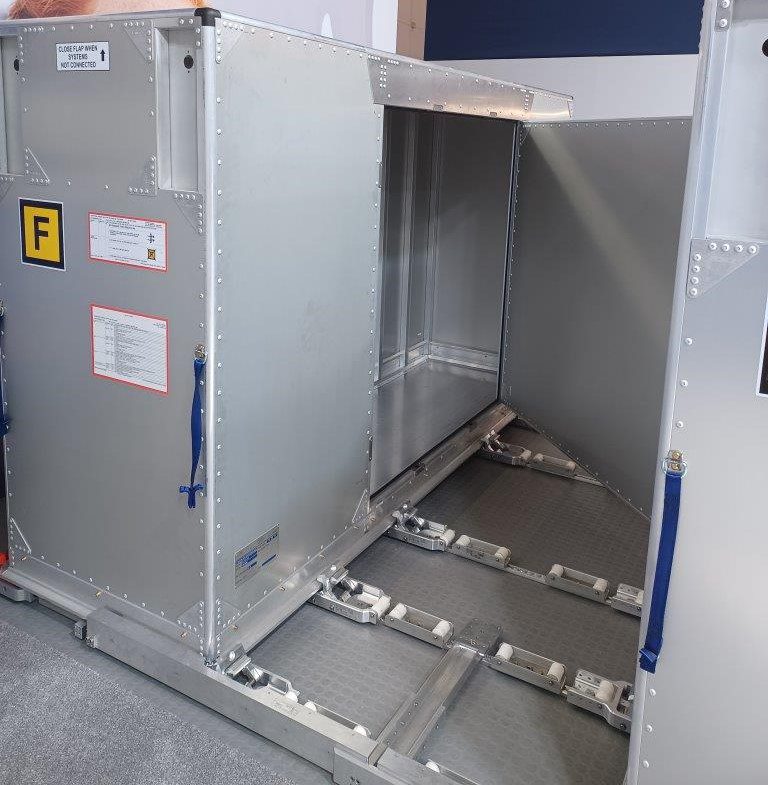
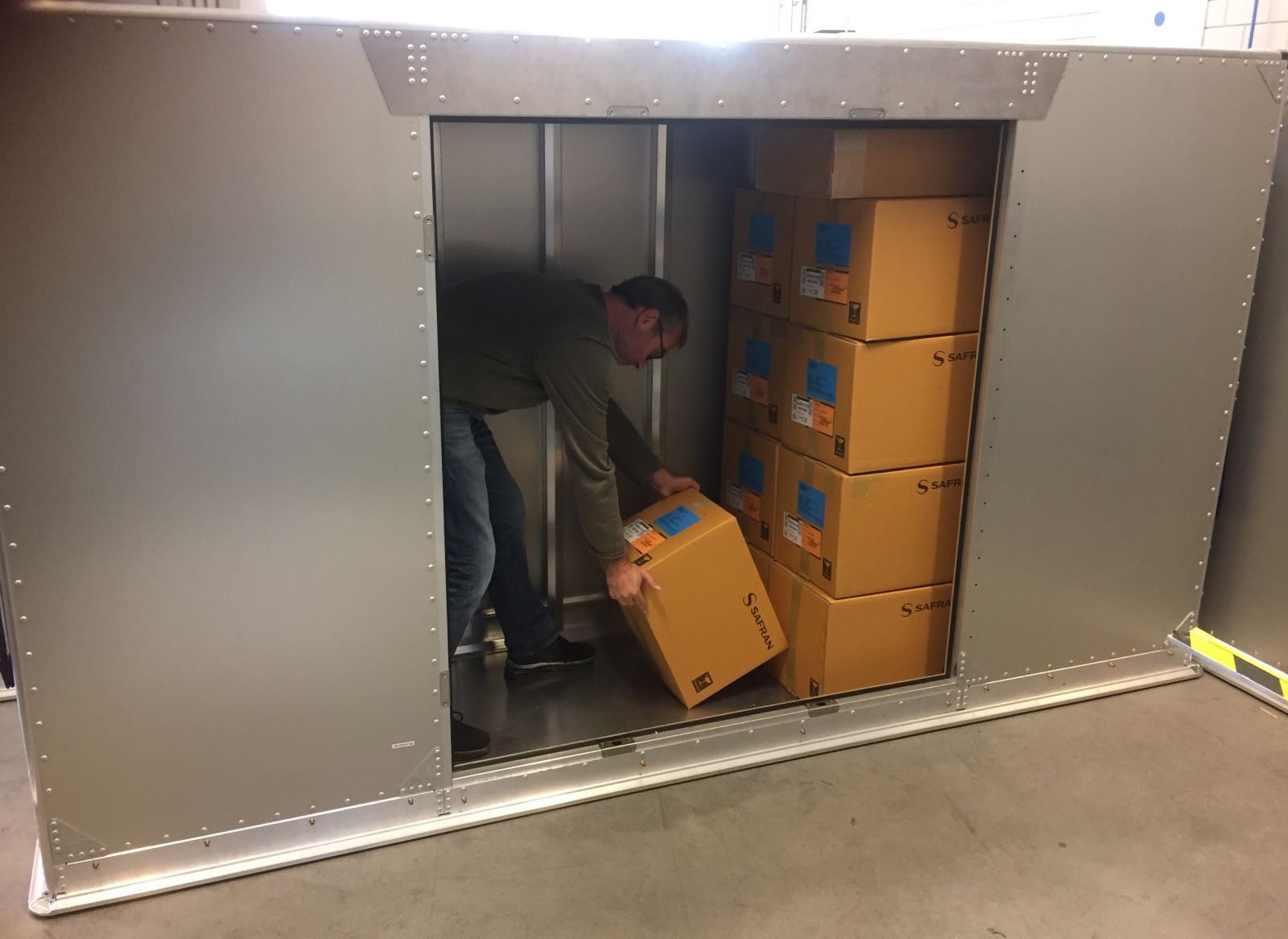
Component Testing for Airworthiness Verification
Components destined for onboard aircraft operation must be designed, verified and certified for inflight use. This requires test plans, test procedures and test to be performed on all critical components.
As part of its work in developing a new design for passenger deck cargo modules for Inflight Canada, SEA Engineering specified the stress testing required for the components of the system, designed the test fixtures needed and managed the build of the fixtures, the set up of the tests and the testing.
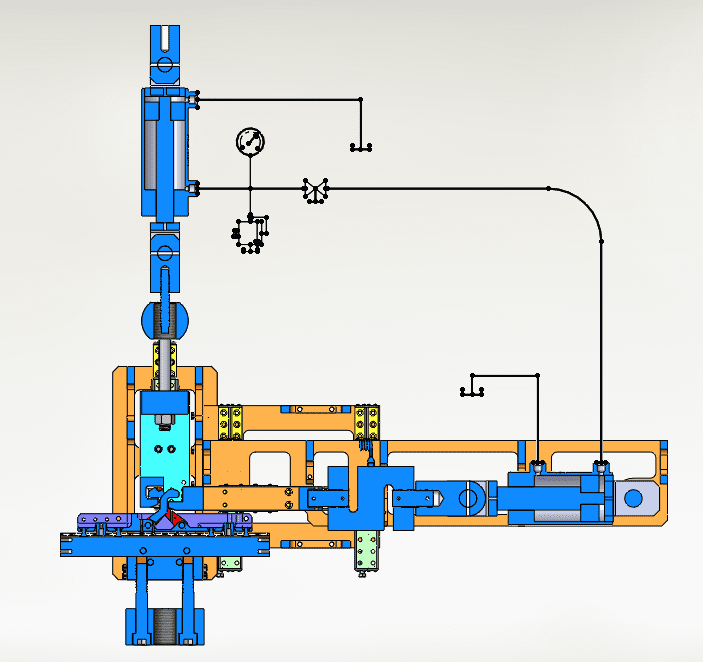
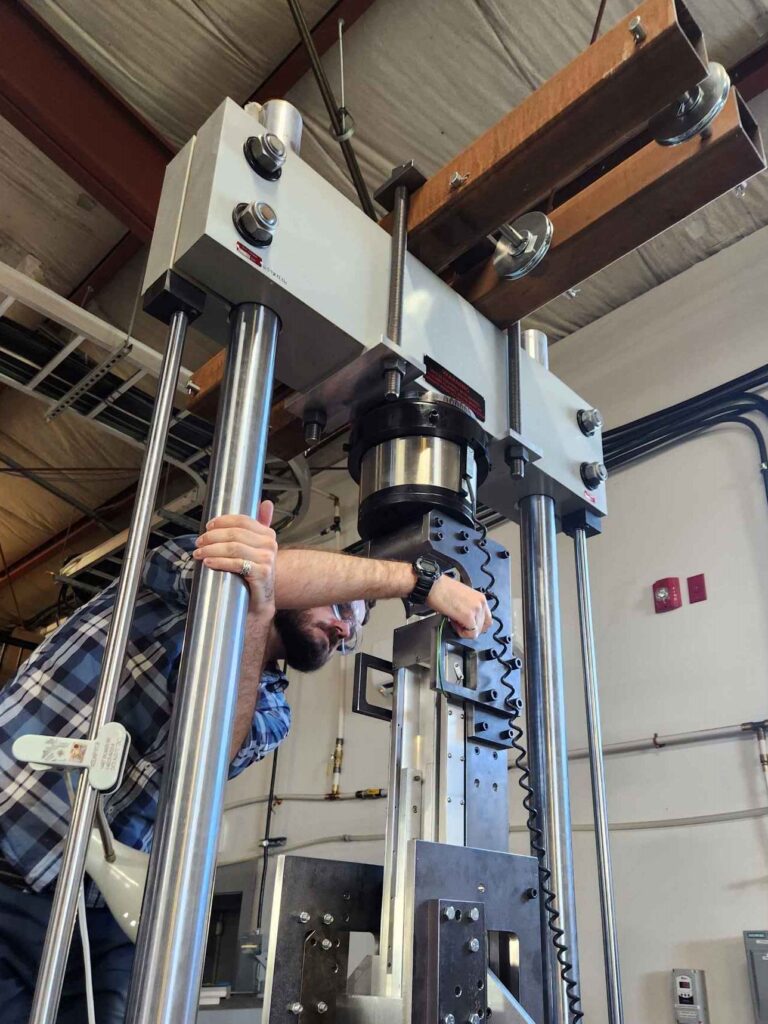
Refrigeration for Passenger Deck Cargo Modules
SEA Engineering’s client, Inflight Canada is seeing demand by customers for refrigeration of cargoes to be carried in its innovative passenger deck cargo modules and has communicated this to SEA Engineering.
The new refrigeration systems must be suitable for installing in each cargo module, be light and simple in design and avoid the complexities of standard vapor compression systems. They must provide reliable refrigeration throughout the whole shipping cycle of typical refrigerated cargoes from truck to warehouse to aircraft to warehouse to truck.
SEA Engineering chose peltier thermoelectric elemnts as the basis for the system and has produced a preliminary design to meet the requirements.
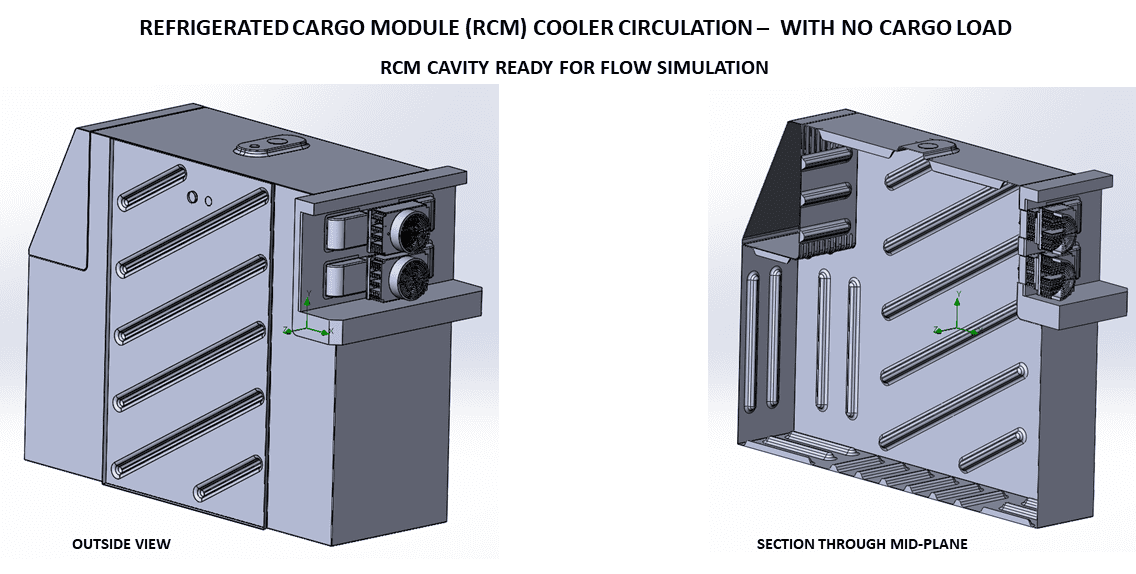

Real-World 3D Scan to 3D Printed Part
A client needed to manufacture custom-fit ballistic vests from 3D scans of real people. SEA Engineering developed a preliminary workflow that enables complex real-world shapes to be converted to 3D solid models that can then be 3D printed as a finished shell component.
The workflow enables the conversion of the scanner output file into an 3D solid model in Onshape, a cloud-based solid modeller. Once the original shape is converted to a native solid in Onshape, specified ballistic resisting geometric structures can be added to the model. These structures can be complex enough to meet the ballistic requirements as well as orient to the surface contour at any location on the part. This can be done by programming the modeller API (Application Programming Interface).
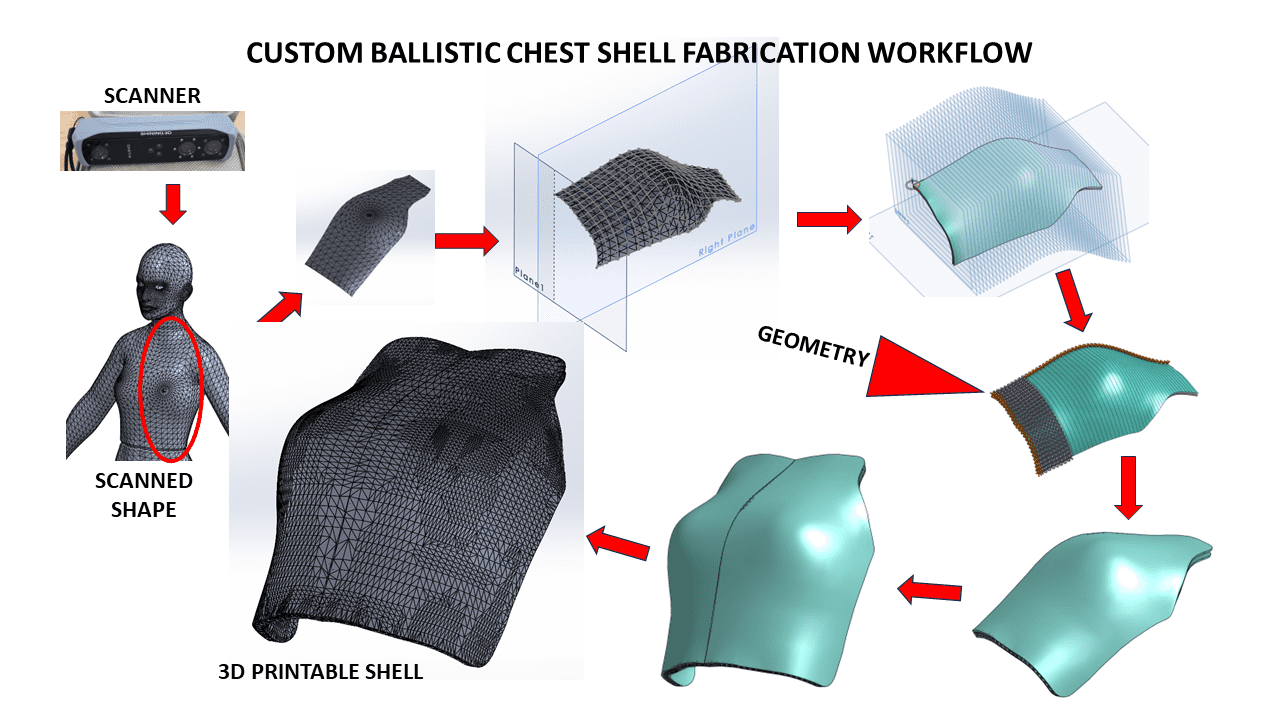
Subsea Battery & Sensor Housing Stress Analysis
A client was developing a new subsea oceanographic sampling system involving computor controlled sample processing. There was a need to verify the pressure integrity of the battery and sensor vessels before committing to full scale in-ocean prototype tests.
SEA Engineering performed FEA (Finite Element Analysis)on solid models of the battery and sensor pressure vessel assemblies and produced reports on the two vessels deliniating the stress regimes in the vessel components resulting from the specified loading conditions. This allowed the client to commence testing with confidence.
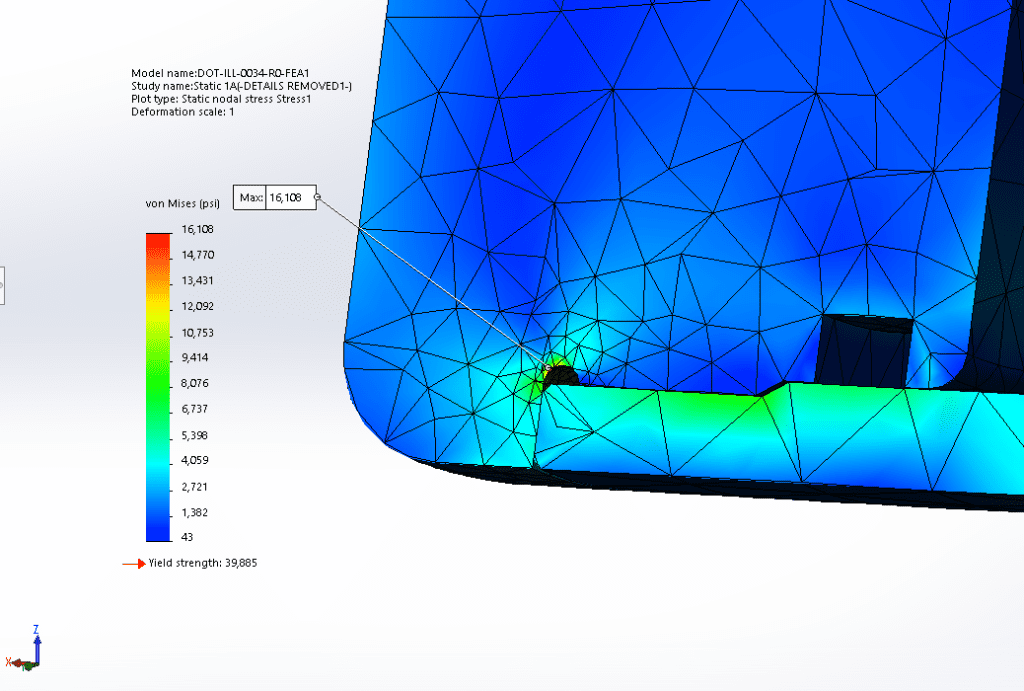
Saturated Air Water Purification System
In cooperation with others, SEA Engineering developed a water purification system based on a process of dehumidifying heated, saturated air.
SEA Engineering performed the psychrometric calculations, created 3D models of the system , produced the drawings and managed the fabrication of a prototype by sub-contracxtors. SEA leveraged the 3D models in producing schematics and images in support of funding and patent applications and production of marketing materials.
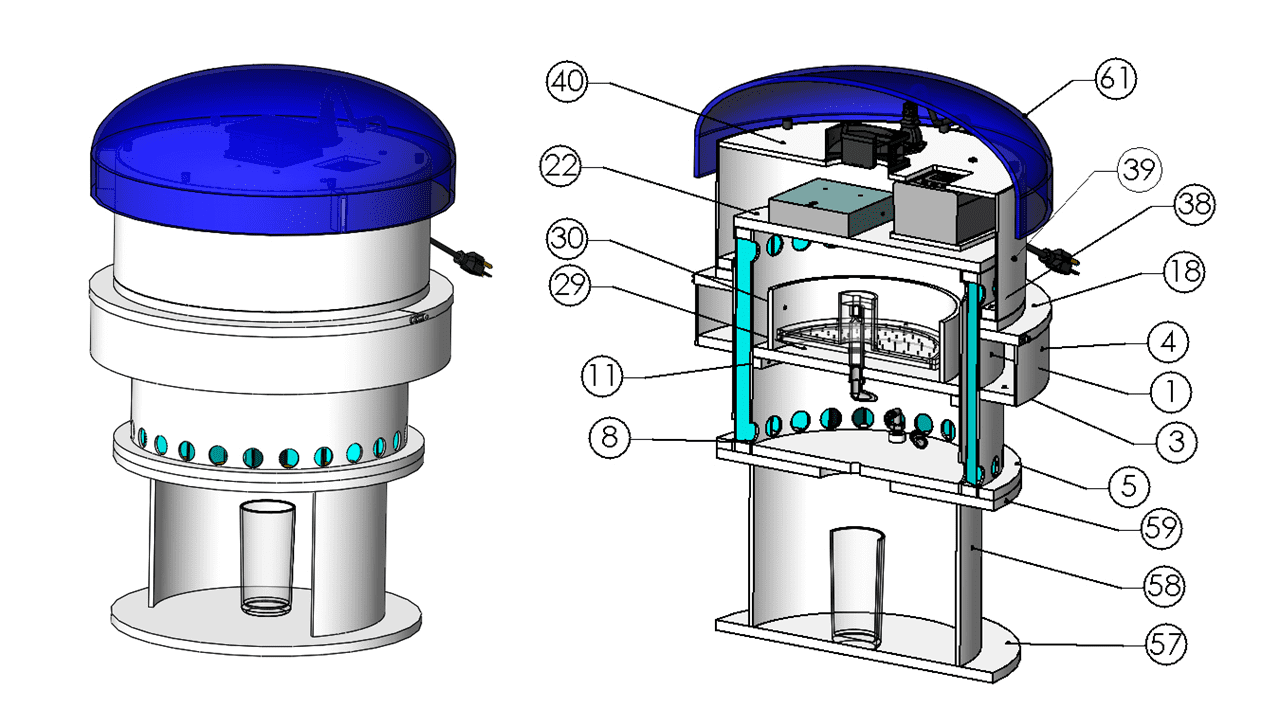
Parametric Modelling of Experimental Aircraft
SEA Engineering worked in cooperation with a client in the development of an experimental aircraft with unique characteristics. The design approach was to create 3D models of shapes that were determined from aerodynamic principals and to subject the models to Computer Fluid Dynamic (CFD) analysis to extract flight performance.
To facilitate the deign/analysis iterative cycle, SEA Engineering produced the model with controlling dimensions defined by equations and linked to a parametric table. This facilitates quicker model changes by modifying values in the parametric table which then automatically redraws the model.
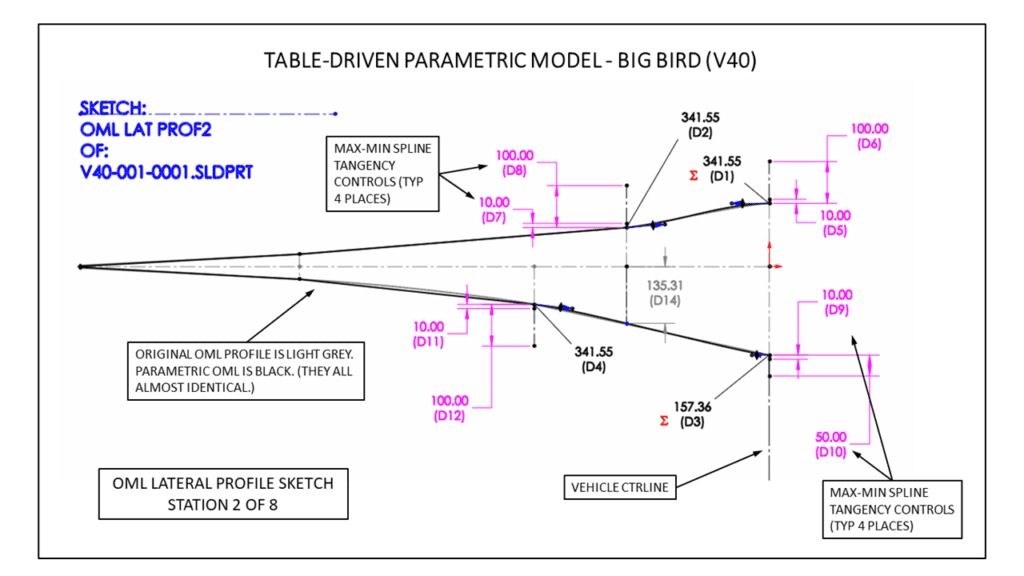
Chip Cooler Hot Plate Tester
High performance chips (integrated circuits) in computers and other electrical/electronic devices can run hot and must be cooled. Cooling devices based on supersonic two-phase flow micro-nozzles have potential for very high density heat transfer. This technology may prove to be effective for heat removal in the very tight confines encountered on circuit boards utilizing high performance chips.
In order to effectively test the innovative cooling devices a hot plate testing device is needed. A hot plate tester is a test device that controls heat flow through a test surface so that the heat flow through a device under test mounted on the test surface can be measured accurately. Drawing from past hot plate test device experience, SEA Engineering has done some work in configuring a hot plate tester for evaluating the thermal effectiveness of newly designed micro-nozzle chip coolers.

Electro-Deionization Water Treatment System
S.E.A. Engineering developed beta-level electro-deionization water treatment systems for the retail/commercial drinking water markets for a client in San Francisco. The technology has been purchased by a manufacturer.

Supersonic 2-Phase Nozzle Refrigeration
SEA Engineering designed prototype refrigeration systems for a client based on the thermodynamics of supersonic 2-phase flow nozzles. This technology has the potential to substantially increase the efficiency of refrigeration systems used in many applications.
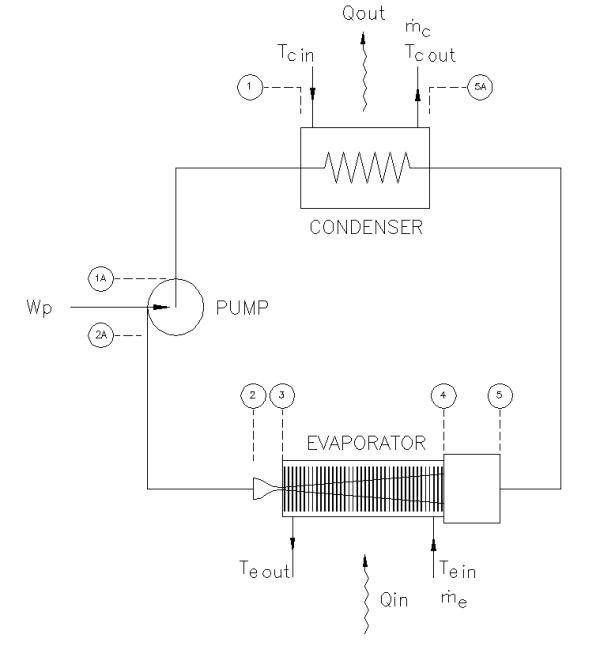
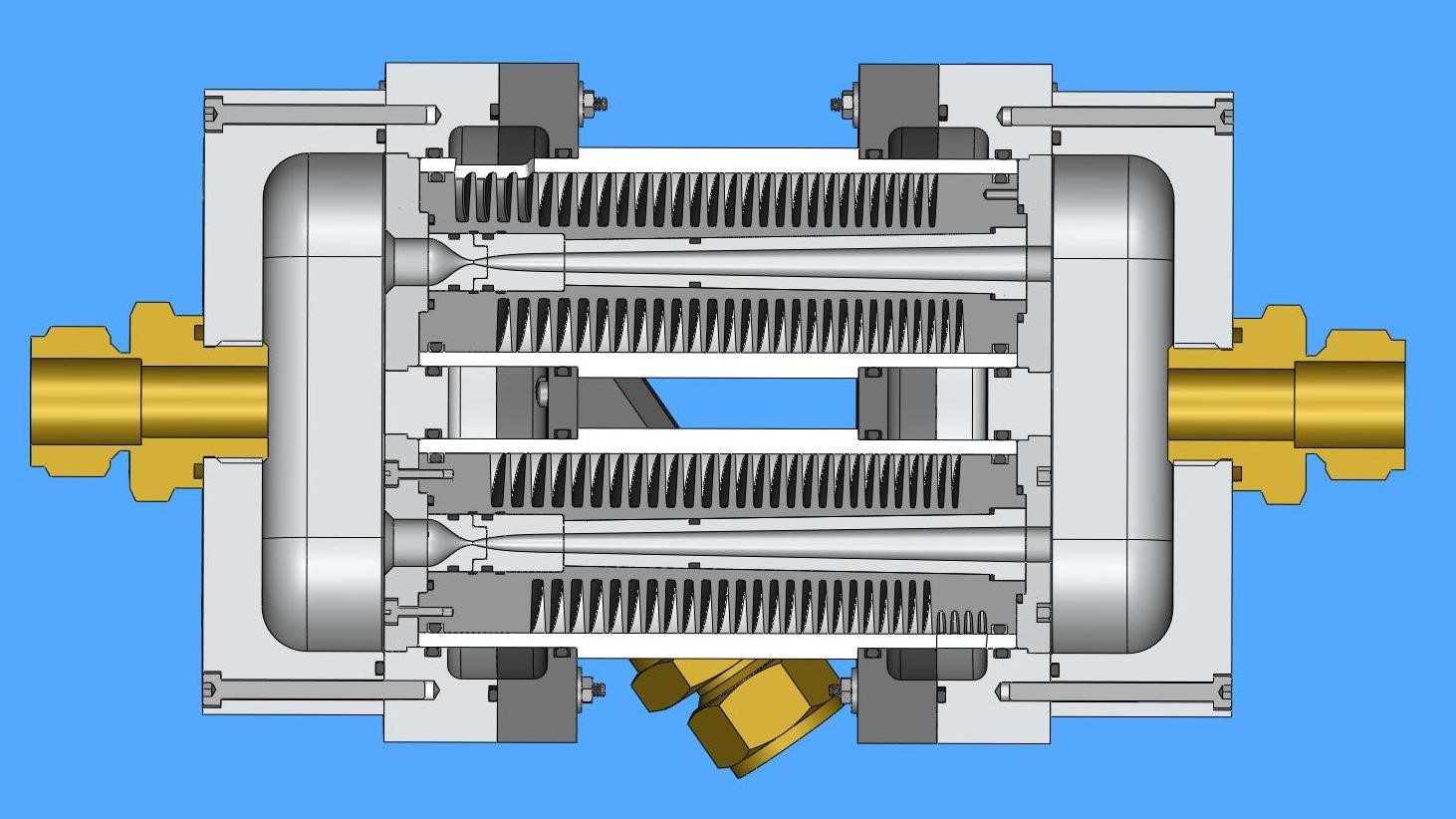
As part of the nozzle development work, S.E.A. Engineering designed experimental nozzles that were used to investigate the thermodynamics of supersonic 2-phase flow. These nozzles are designed to form the prime mover in refrigeration circuits that are highly efficient alternatives to the traditional vapor compression cycle.
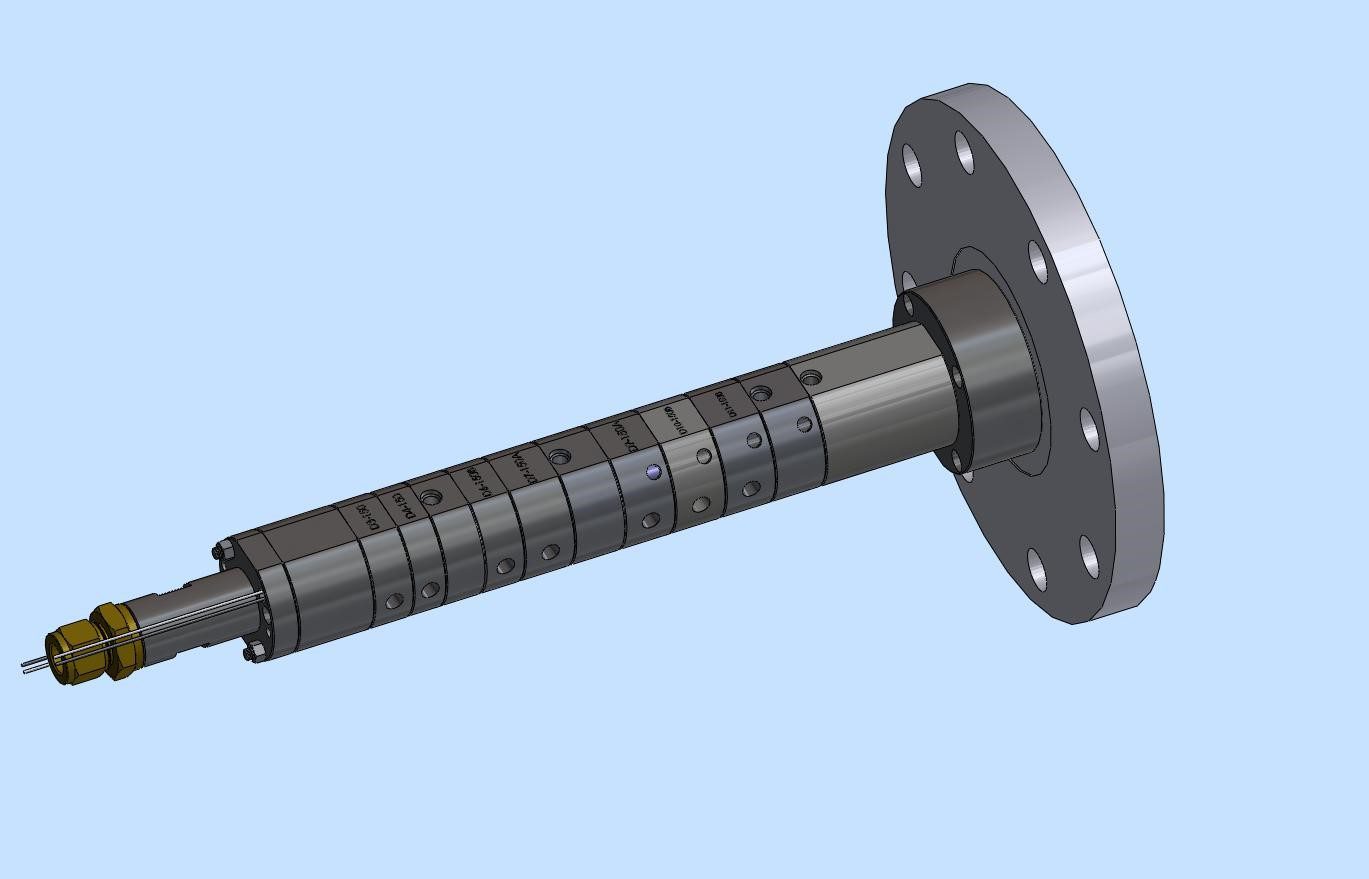
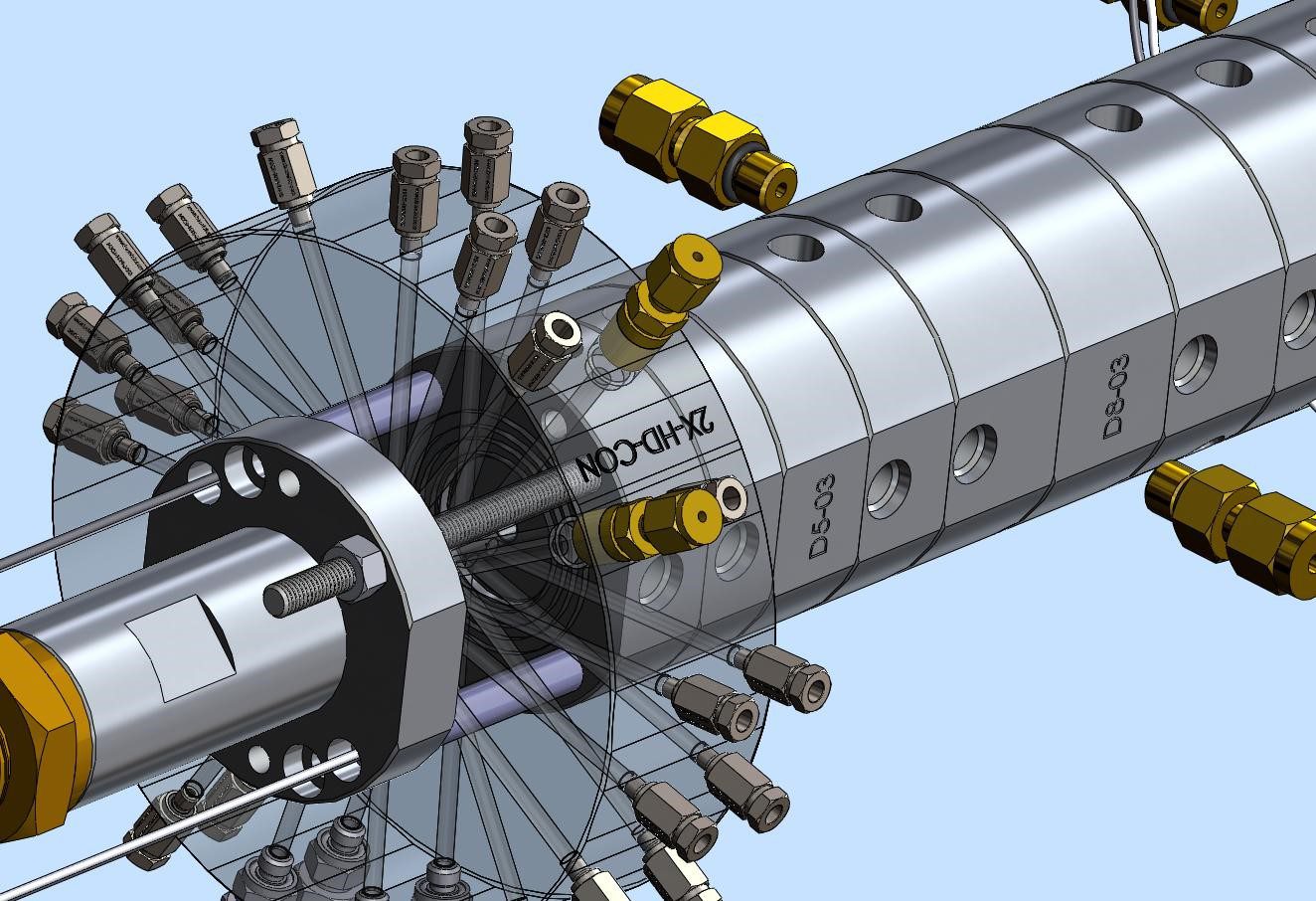
As a further part of the nozzle development work, S.E.A. Engineering designed a complete thermal load test bed for testing multiple nozzles at one time.
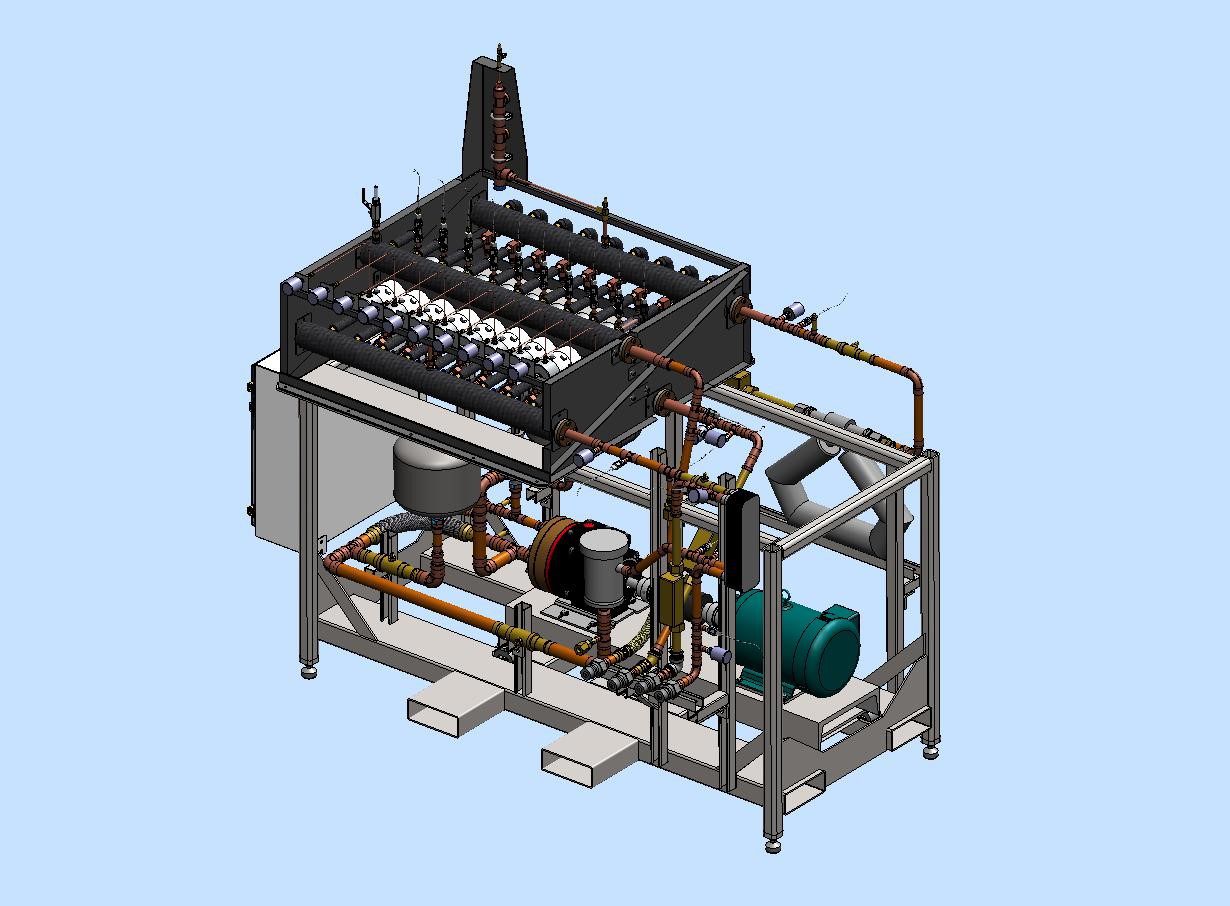
Defense Subsea Vehicle Development
S.E.A. Engineering worked with a US company on the development of a large underwater vehicle for the US Navy. SEA obtained and maintained a Canadian Controlled Goods registration for the one and a half year duration of this project. Also, Ed Smallhorn maintains a NATO Secret certification level. This allows Ed Smallhorn and SEA Engineering Co. Inc. to work on defense projects requiring ITAR (International Traffic in Arms Regulations), Canadian Controlled Goods certification, and other defense certifications of NATO countries.
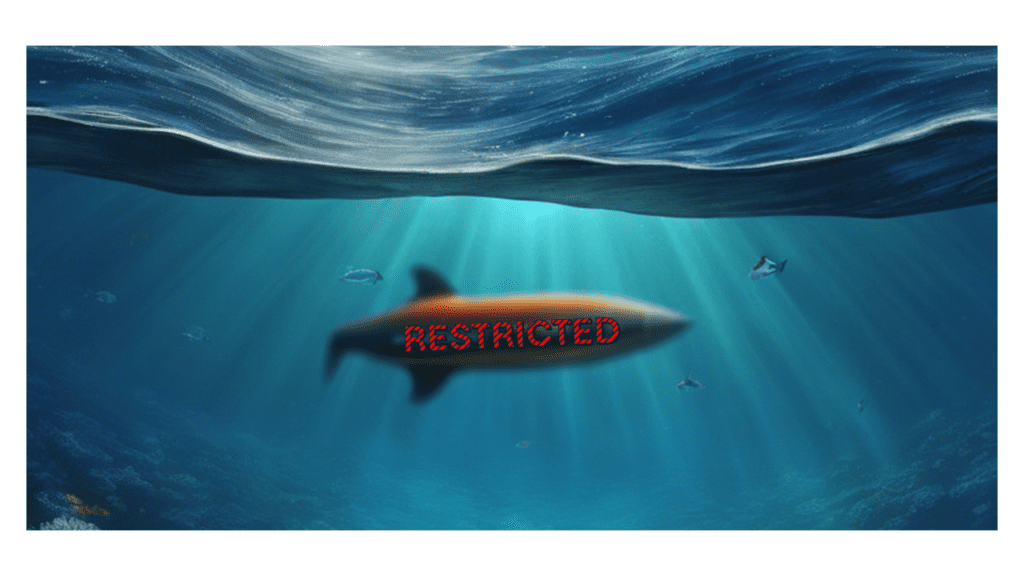
Experience in Subsea Equipment Design
Early on, SEA Engineering Co Inc was involved in designing a large offshore subsea module for hazardous cargo extraction from sunken vessels. Through this and other projects over the years, the company developed a broad range of expertise that they have applied to projects taking them from initial concept through the development phases to completion.
SEA Engineering’s experience in subsea equipment design and construction includes the development of saturation diving system components and the design of military underwater breathing apparatus, as well as design and construction of special-purpose test and evaluation systems, including:
- Breathing Simulators for Testing Breathing Devices
- Thermal Manikins for Testing Protective Garments
- Thermal Manikins for Comfort Studies in Automobiles
SEA Engineering’s experience also includes the development of Freon-free refrigeration systems as well as designs for electro-mechanical devices and systems that include:
- Pressure Vessels
- Centrifugal Blowers & Pumps
- Magnetic Couplings
- Electrical & Fluid Slip Rings
- Special Purpose Heating & Refrigeration Equipment
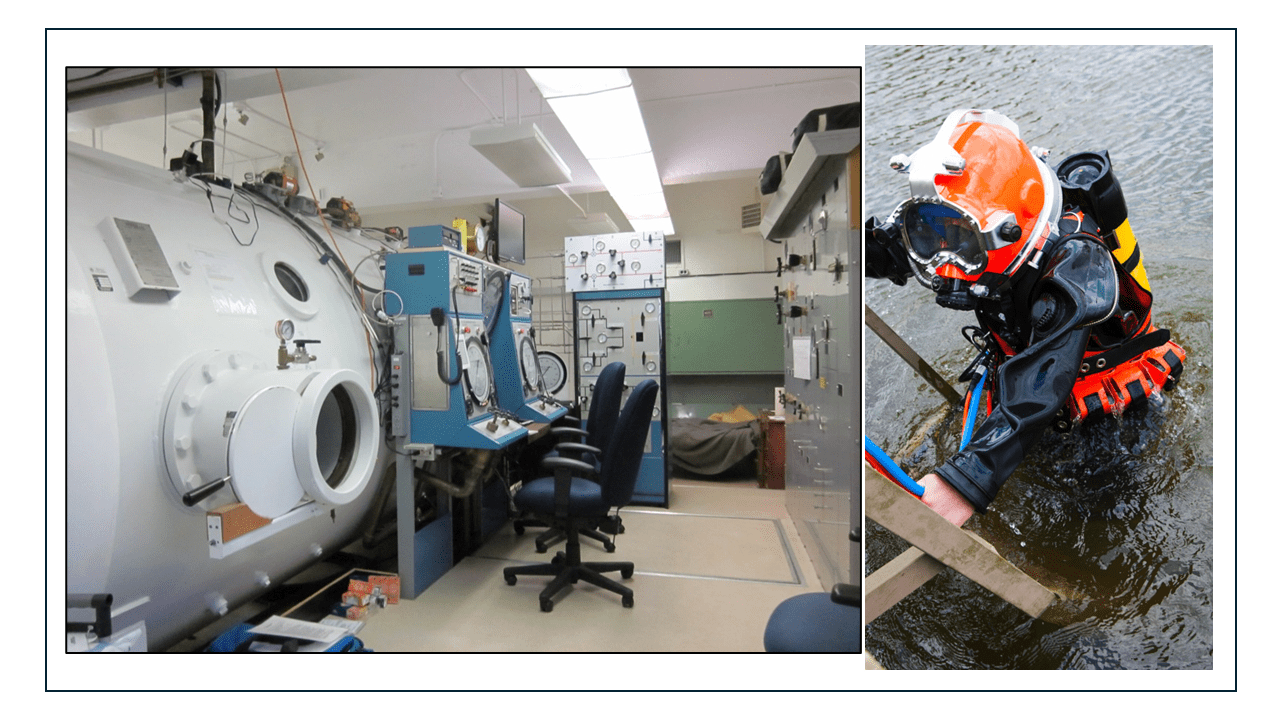
Subsea Heavy Oil Cargo Extraction Salvage System
For this project, our client was a Canadian consulting company that had a partnership with a large US subsea engineering firm. This partnership jointly owned a concept for extracting heavy oil cargoes from sunken vessels.
We were contracted to manage a design team to bring the technology through the detailed design stage. The system consists of a 60-ton (in-air) subsea module connected by subsea hoses to barge-mounted oil/water separation equipment and an oil storage vessel. The subsea module contains components based on proprietary technology to penetrate the plating of a sunken wreck and extract the cargo to the surface vessels.

Thermal Observation Manikin - TOM
S.E.A. Engineering has designed a series of therml comfort manikins for The Cord Group Limited. The manikin series is designed for thermal analysis in the development of comfort control systems for vehicles. The manikins produced are destined for a large US car manufacturer’s R & D program. With rising energy costs, the automotive companies are focusing a lot of attention on ways to keep drivers comfortable at the minimum possible energy cost.
Due to the highly transient and heterogeneous temperature distribution in car interiors, these manikins must be more highly segmented and have a faster response than protective garment manikins. To meet these requirements, the TOM series manikins have 26 sections and are made of thin copper shells. S.E.A.’s team had to work out the molding – electroforming processes to produce this type of construction as well as develop the skeleton, joint and heater/sensor designs. Extensive use was made of 3D solid and surface modeling in the design process.
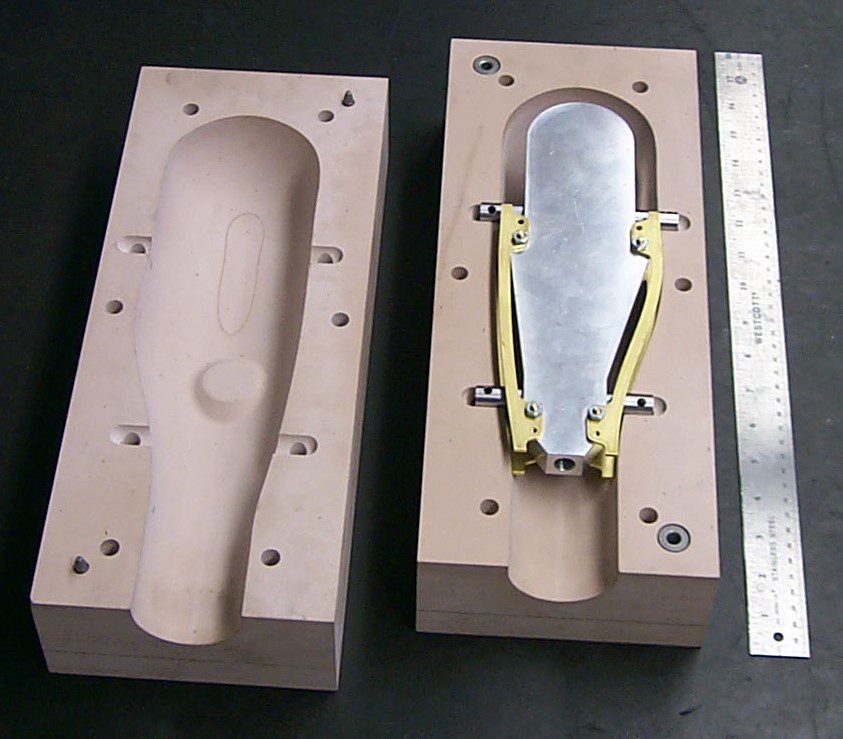
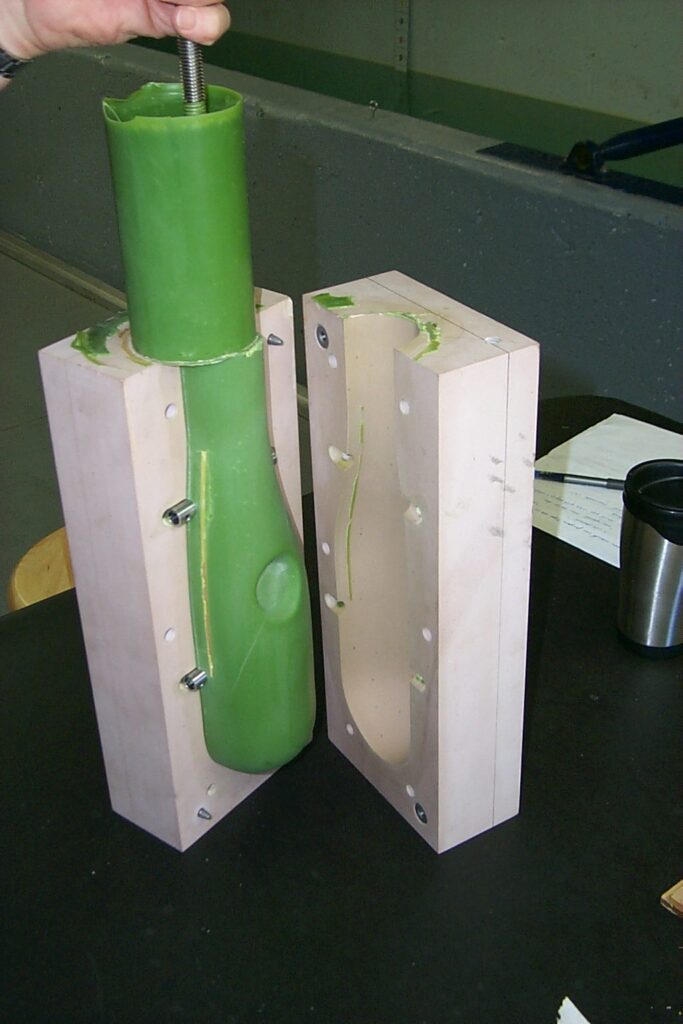

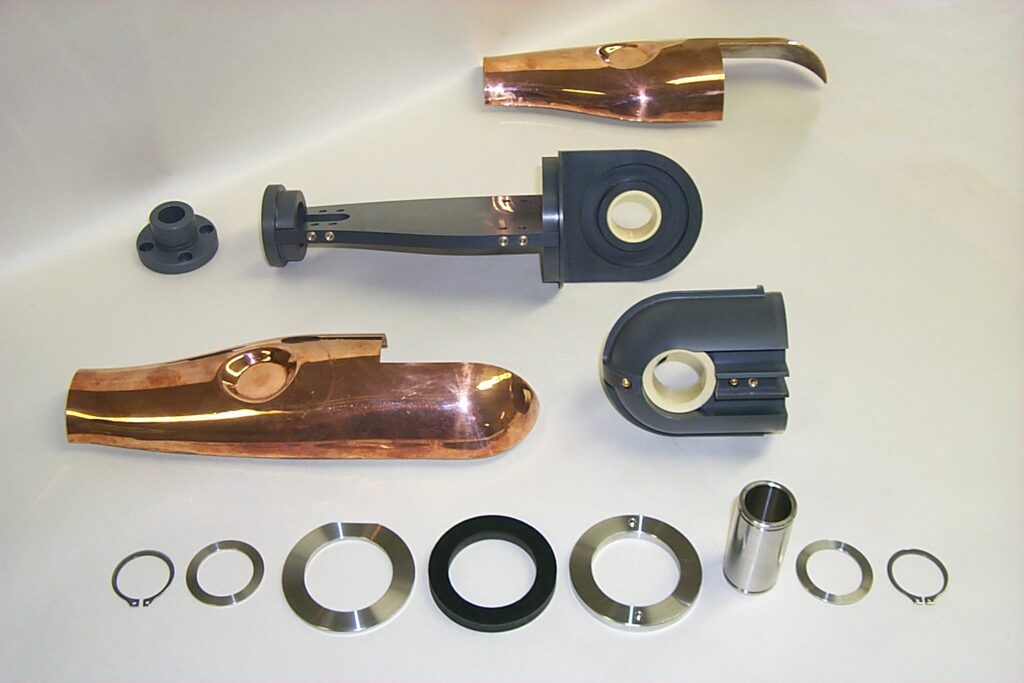
All data acquisition hardware is internal to these manikins and wiring is kept to a minimum using distributed MUX boards mounted in the limbs and torso. All high-level measurement and control tasks are carried out by Windows-based software running on a PC. The software outputs skin temperature, heat flux and a comfort Predicted Mean Vote (PMV) for each manikin section.


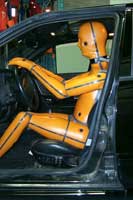
Thermal Instrumented Manikin - TIM
Mr. Smallhorn, president of S.E.A. Engineering, is the project engineer responsible for the TIM series of thermal manikins designed and developed for The Cord Group Limited. The TIM Thermal Manikin Test System is designed for evaluating the thermal insulation of protective clothing. The system is specifically designed to test survival suits for ocean emergencies but can be used to test any thermal protective garments or systems such as snowmobile suits and sleeping bags. The system consists of a manikin and data acquisition/control system connected to a computer running special purpose software. The manikin itself has 15 sections based on aluminum castings equipped with temperature sensors and electric heaters. Shoulder and hip joints are rotatable to allow the manikin to assume seated and standing test positions. All stationary and moveable joints in the manikin are sealed making the manikin immersible.
In operation, the manikin is dressed in the suit to be tested and immersed in a suitable environment such as a wave pool. The computing equipment then controls the heaters to maintain the skin of the manikin at a set temperature. Simultaneously, it measures the electrical power required to do so. This power is equivalent to the heat that escaped through the suit due to the temperature difference across it. The power and temperature difference are then used, along with the known surface area of the manikin to calculate the thermal resistance provided by the suit.
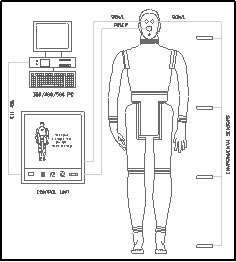


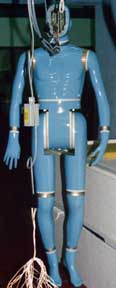

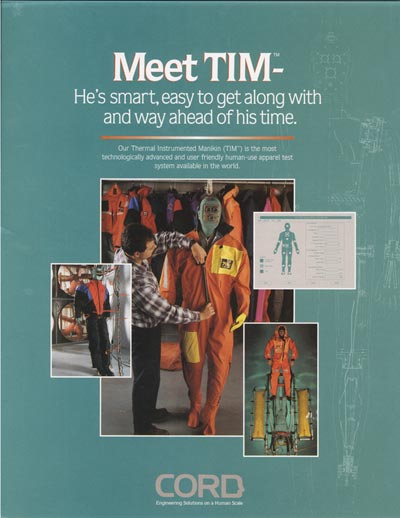
External Environmental Control System for Hypo/Hyperbaric Diving Chamber
The Department of Kinesiology at Simon Frasier University installed a hypo/hyperbaric chamber system for ergonomic studies at altitude and ocean depth. The chamber system consisted of a double-lock dry chamber and a wet pot (water-filled pressure chamber).
The environmental control system (ECS) controls temperature, humidity, and carbon dioxide levels of air, nitrogen-oxygen or helium-oxygen atmospheres in the dry pressure chamber. The ECS also controls the temperature in the wet pot, and the particulate and bacteria levels in the water. The system is of the external type, i.e., all environmental control equipment is external to the chambers.
Ed Smallhorn was the project manager for all aspects of the work, from the proposal stage through design to installation at the site. The equipment consists of the following:
- A Scrubber Vessel
- Heat Exchanger Vessels
- A Magnetically Driven Gas Blower & Water Pump
- Stainless Steel Distribution Piping & Control Valving
- A Control Panel
- Refrigeration & Heating Equipment
- Water Filtration & Sterilization Equipment

Design & Certification of Diving Chamber Observation Windows
SEA Engineering Co Inc has designed replacement windows for high-pressure diving chambers and submersibles (mini-submarines). These window replacements have been designed according to American Society of Mechanical Engineers (ASME) Pressure Vessels for Human Occupancy (PVHO). With this certification, the appropriate stress analysis ensures that the following meet the code:
- Window Seats
- Window Flanges
- Window Geometry & Thickness
- Window Seals
- Dimensional Tolerances & Surface Finishes
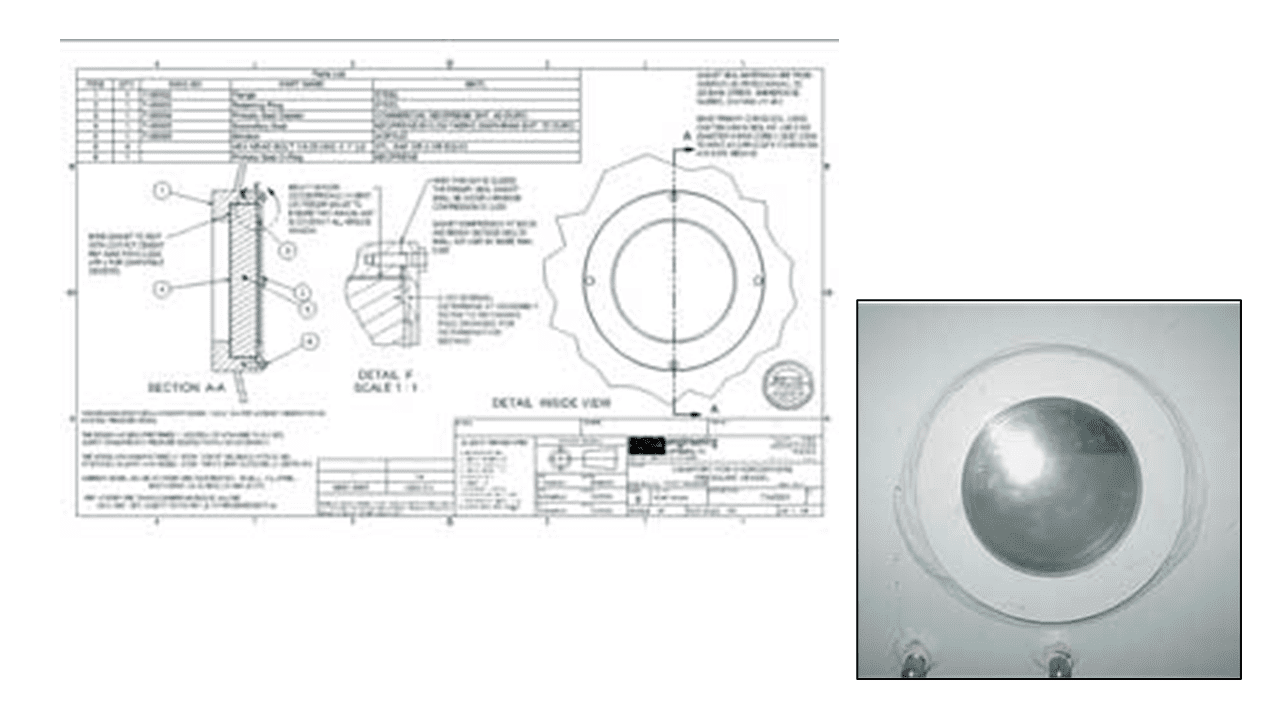
Semi-Closed Circuit Underwater Breathing Apparatus
The Canadian Armed Forces (CAF) required a new underwater breathing apparatus to replace the CDBA (Clearance Diver’s Breathing Apparatus). The CDBA was WWII British technology, which the CAF wished to upgrade to state-of-the-art Canadian technology. This system was configured as a backpack with over-the-shoulder counter lungs. A unique feature of the system is that it mixes the diluent gas (nitrogen or helium) with oxygen in a ratio that is a function of depth. Thus, the diver is fed a relatively constant partial pressure of oxygen at all levels. The innovation resulted in a patented technology.
This system was called the CUMA (Canadian Underwater Mine-Countermeasures Apparatus). Ed Smallhorn was the project manager and design engineer for the project and was responsible for all aspects of the work, from the proposal stage through design to construction and testing of advanced development models.

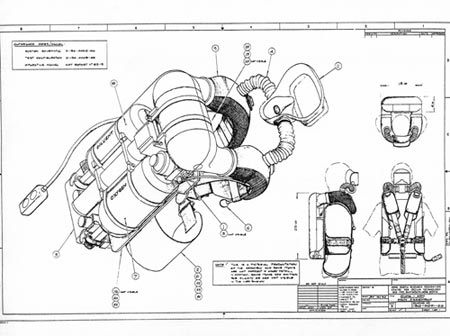
Special Purpose Transmission
This product was designed in response to an expressed need in a specific application area. A manufacturer of special-purpose agricultural harvesting equipment needed a transmission to link a farm tractor power takeoff to a hydraulic motor to drive the attached machinery.
Existing transmissions did not have adequate robustness or horsepower ratings, nor were appropriate gear ratios available. We analyzed the needs of this client, and the product was brought through the conceptual design and detail design phases.
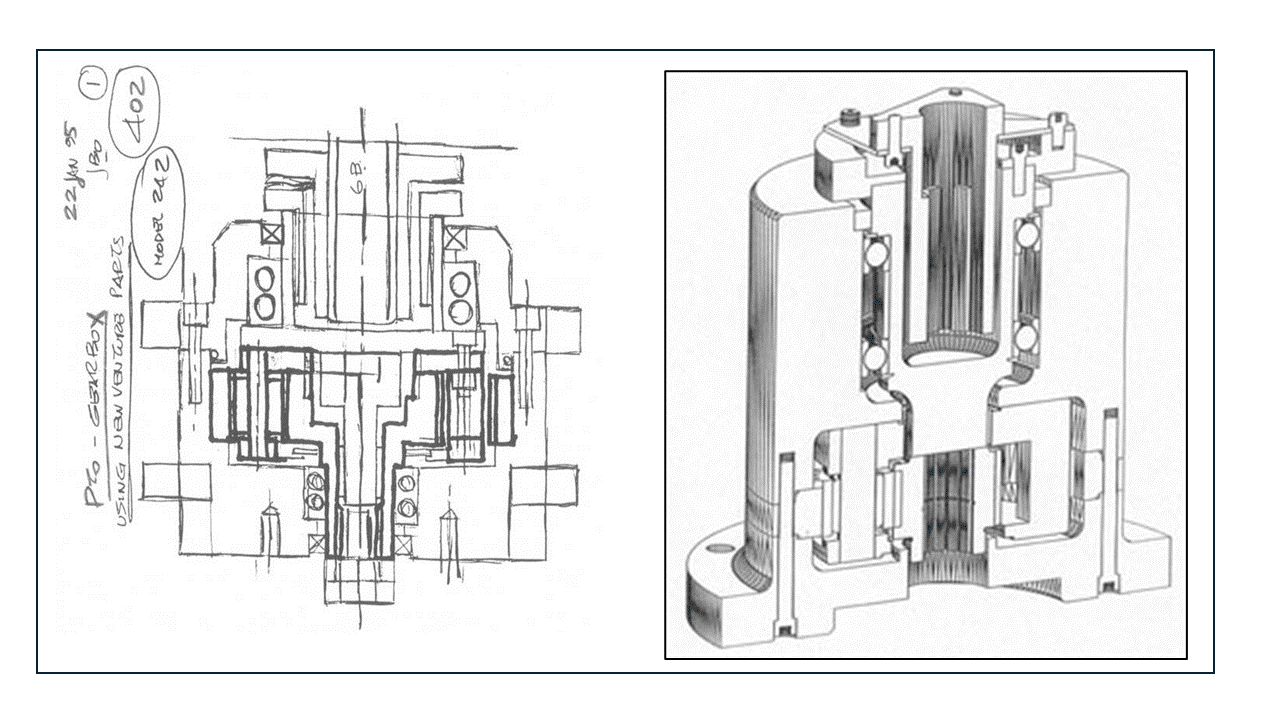
Ship's Tank Heating System
SEA Engineering Co Inc was retained by a client who wished to convert the oil storage tanks on one of its offshore supply vessels from diesel to Bunker-C. This required the design and installation of a tank heating system. Here’s how we helped them:
- Specified All Equipment
- Designed the Control System
- Managed the Control System Subcontractor
- Performed all Required Heat Transfer Analysis
- Supervised All Installation Work
- Performed System Initialization
- Produced a System Operator’s Manual
This design was based on a glycol heat transfer medium to meet cost, cold ocean, and environmental requirments. The system consisted of heat transfer coils in each of the six cargo tanks, two boilers, two pumps, distribution piping, control valving, and a control panel based on digital temperature control technology. It maintains cargo temperatures at 110°F under all ambient conditions encountered in the North Atlantic Ocean or the North Sea.
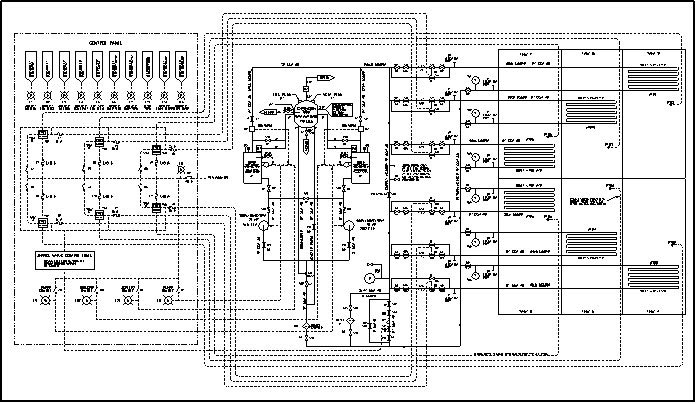
Chemical Process Tank Mixer Modification
SEA Engineering Co Inc led a project to redesign a bottom-entry drive for a chemical mix tank for a manufacturer of medical dip molded products. The original design had been performed by a company without the concept innovation skills nor the precision machine design and fabrication capabilities required to produce a working solution.
We applied careful attention to precision fits and tolerances, proper application of rolling contact bearings, and the design of a special seal arrangement to seal against leakage of the agressive process solvents. As a result we delivered an effective solution for our client.
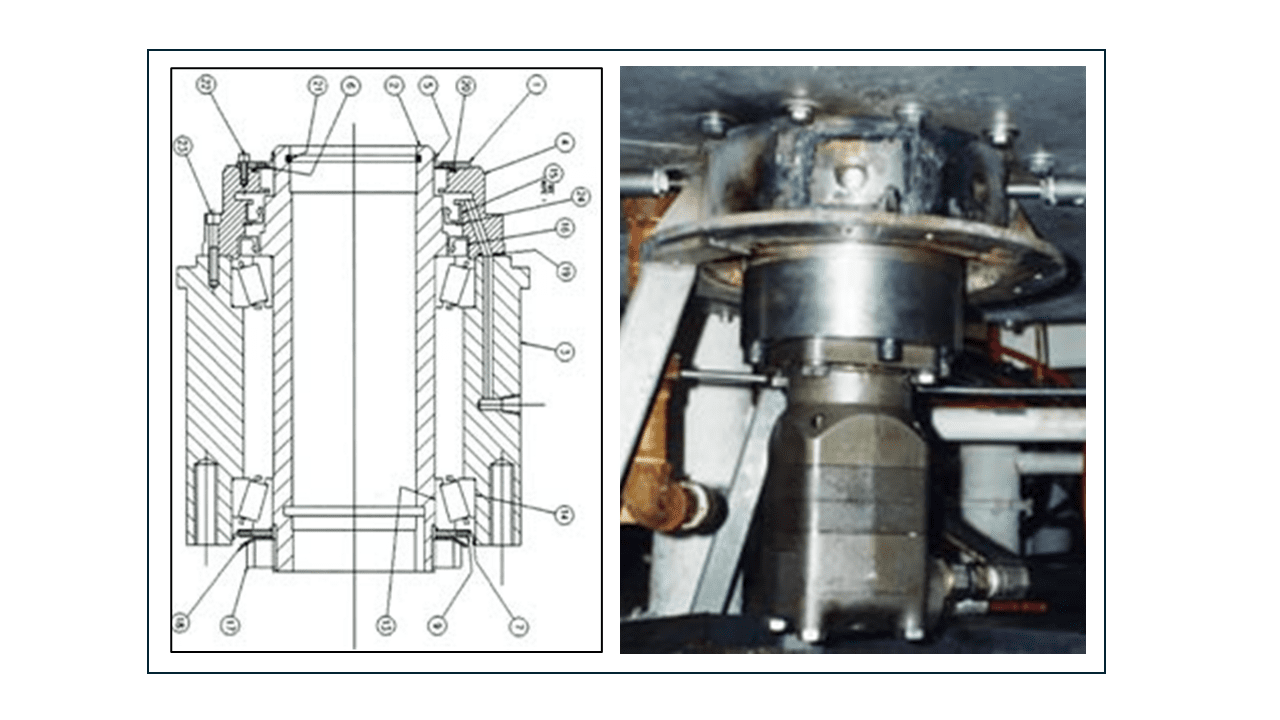
Fluorescent Tube Disposal Unit
We were contracted by a client to perform all machine design, assembly, and testing work to produce six prototype “Bulb Eater” units starting from a concept. This resulted in the creation of the Fluorescent Tube Disposal Unit, a portable tool designed to crush spent fluorescent tubes of any length safely and conveniently.
To operate the unit, a spent tube is simply hand-fed into the loading port. The tube then passes through a sealed reduction chamber, where a rotating blade breaks it into smaller fragments. The resulting mulched glass fragments are collected in a vacuum filter bag and dust and potentially hazardous vapor is removed from the air stream. Then the air is expelled through a further filter system at the base of the unit.
The unit has safety features to prevent the bag or filter from overfilling, ensuring a clean and safe working environment for the operator. The unit was designed to meet CSA certification standards.
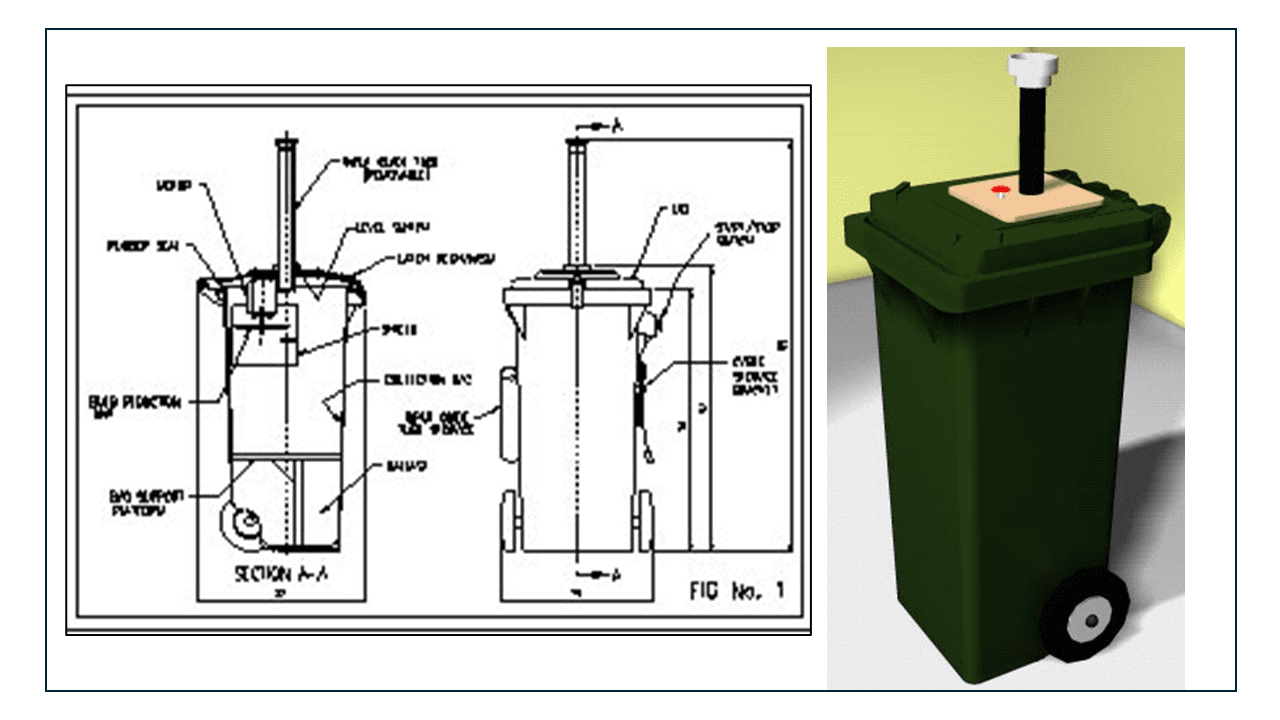
Transit Train Seat Mold 3-D Design
SEA Engineering Co Inc supported a proposal by a fiber-reinforced composites company for the mold design for a high-volume public transit train seat. By offering this solution, we were able to support our client’s efforts to secure a project with a prominent mass transit vehicle manufacturer.
To accomplish this, our team focused on sourcing and negotiating with specialized FRP mold manufacturers and consultants. Additionally, we produced 3-D drawings of both the mold and the finished product. These efforts played a vital role in supporting the activities associated with the proposal.
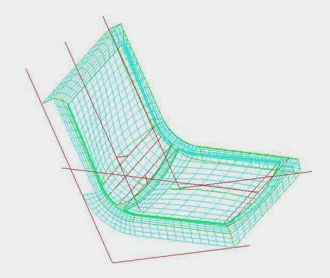
Iodine Based Water Treatment System
S.E.A. Engineering was retained by a client to design and build a prototype iodine-based water treatment system. The design team started with the client’s concepts and performed all the development work to bring the concept to the prototype stage. This included work on the prototype design, assembly and testing as well as concept test protocol planning and concept test system design and construction.
The water treatment system is a packaged unit designed for removing bacteria, viruses and cysts from drinking water supplies to residential, small commercial or institutional establishments. It is based on the microbiocidal properties of iodine. By injecting elemental iodine into the water stream, and controlling operating parameters within limits, and finally stripping the iodine from the water, it produces a source of drinking water, on demand free of microbes and iodine residuals.
The unit consists of a water circuit and controls housed in two enclosures plus two contact tanks.
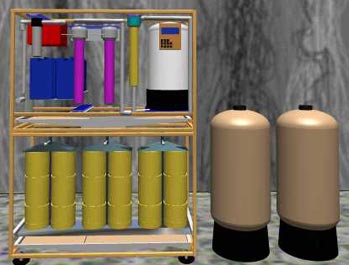
3-D Model Of Electronic Parking Meter Housing
A 3-D model of an electronic parking meter was created by S.E.A. Engineering for a client. The model was used to create a plastic model by stereolithography for internal circuit board and mechanism fit up. The 3-D model and 2-D detail drawings created from it were used to make production die castings of the housing.
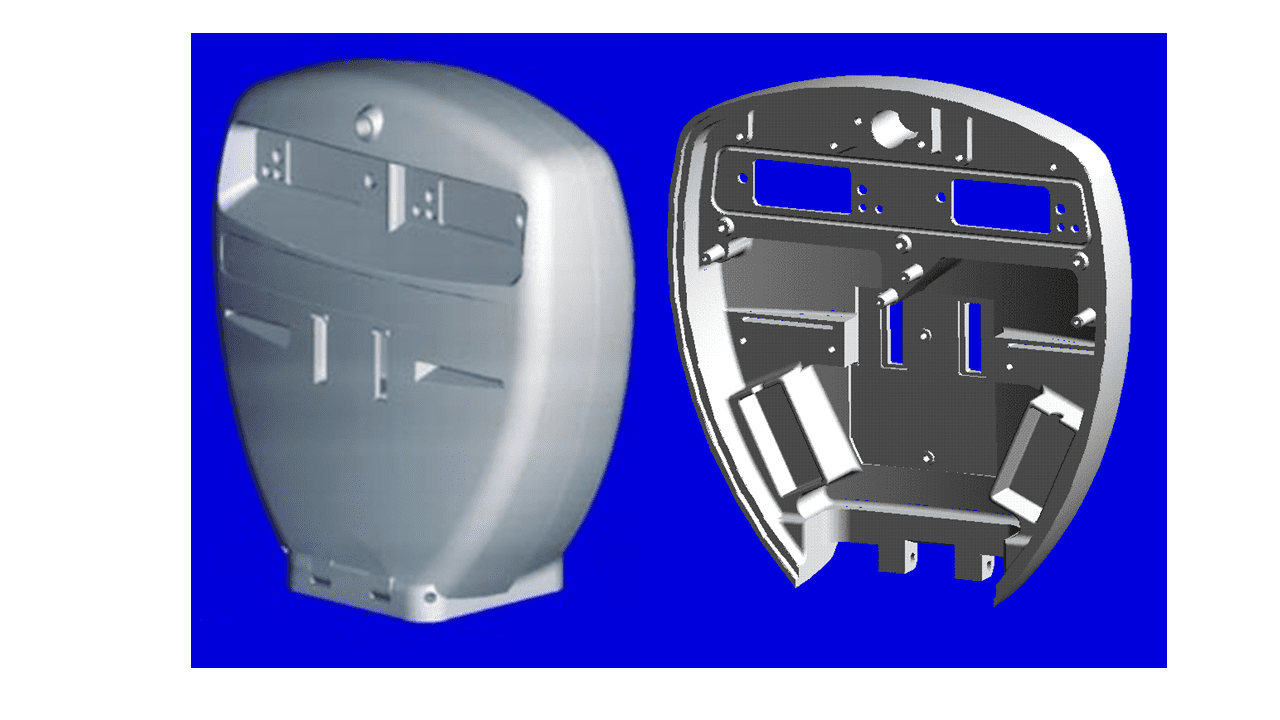
Helicopter Emergency Ditching Training Simulator
The Modular Egress Training Simulator (METS) is a system for training offshore rig helicopter pilots, crew and passengers to survive an emergency ditching in cold ocean conditions. It consists mainly of a helicopter cabin mockup which sinks and rolls over in a training pool with the fully outfitted trainees inside. The training pool environment simulates real world conditions of temperature, wind, rain and waves.
S.E.A. Engineering completed the design of new door and window panels to simulate specific helicopter configurations, and the design of new frames for two new models: a small one for a low-cost unit and a larger modularized frame to simulate the cabin structure of the EH101 helicopter. All frames are based on stainless steel hollow structural sections.
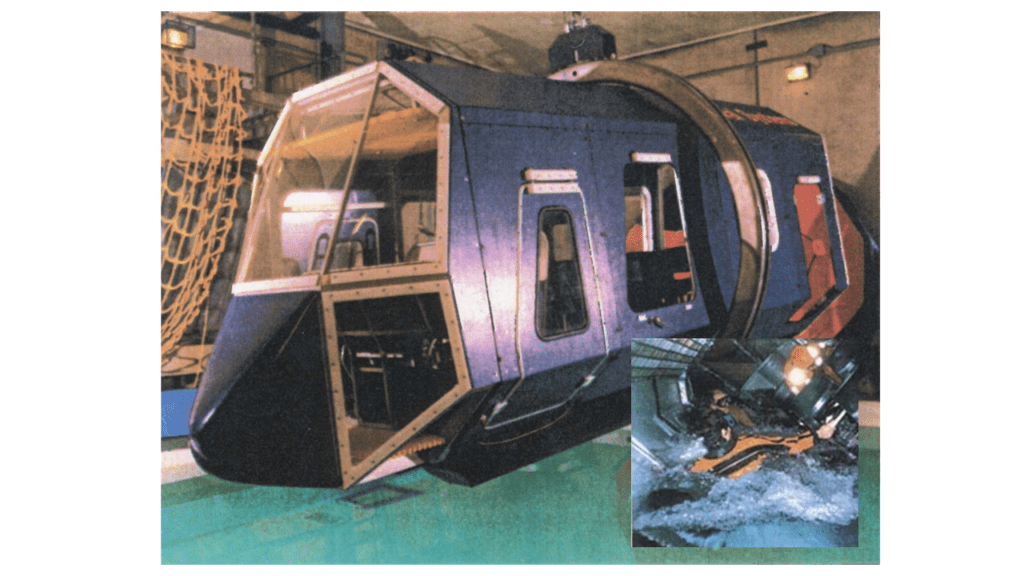
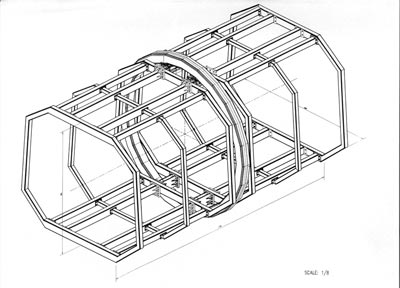
50-Ton Plastics Thermoforming Press
A thermoforming press is used to form thin plastic sheet into shapes for end uses such as packaging. S.E.A. Engineering was contracted by a thermoforming machine manufacturer to design the forming, trimming and scrap-winding stations of a new machine and to assist with heater and indexer system design. The new product is a servo-driven, plug-assist machine with separate heating, forming, trimming, stacking and scrap-winding stations. The design was completely done using 3D parametric modeling which allowed the use of finite element analysis on critical components and the use of 3D dynamic analysis on the drive train so that the optimum servo drives could be selected. Typical tasks involved in the project were:
- Design Criteria Development;
- Machine Configuration Definition;
- Tooling configuration definition;
- Frame Concept development;
- Existing toggle/drive analysis;
- New toggle/drive concept generation;
- New toggle/drive selection and analysis;
- Heater concept development;
- Indexer concept development;
- Forming and Trim Station detail design;
- Scrap winder detail design.
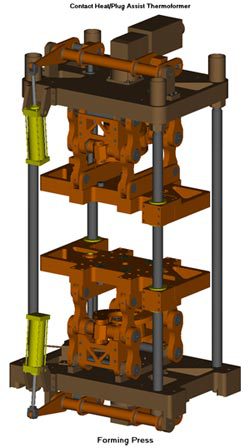

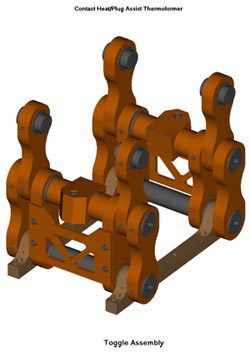
Your Partner in Clear-Cut Engineering Solutions
Step into a world of innovation with us where we wear many hats – from being Machine Design and Mechanical Engineers to Electro-Mechanical system Design engineer. Our expertise extends to crafting solutions like Survival Suit Testing Equipment Design engineering, Subsea Vehicle design, Underwater Breathing Apparatus, and Thermal Manikin Design. Precision is our mantra as Plastics Thermoforming Equipment Design engineer, creators of Special Refrigeration Systems, and pioneers in Defense Equipment. As Water Treatment Equipment Design, our mark is left with projects like Electro-Deionization and Thermoelectric Refrigeration Systems design.
